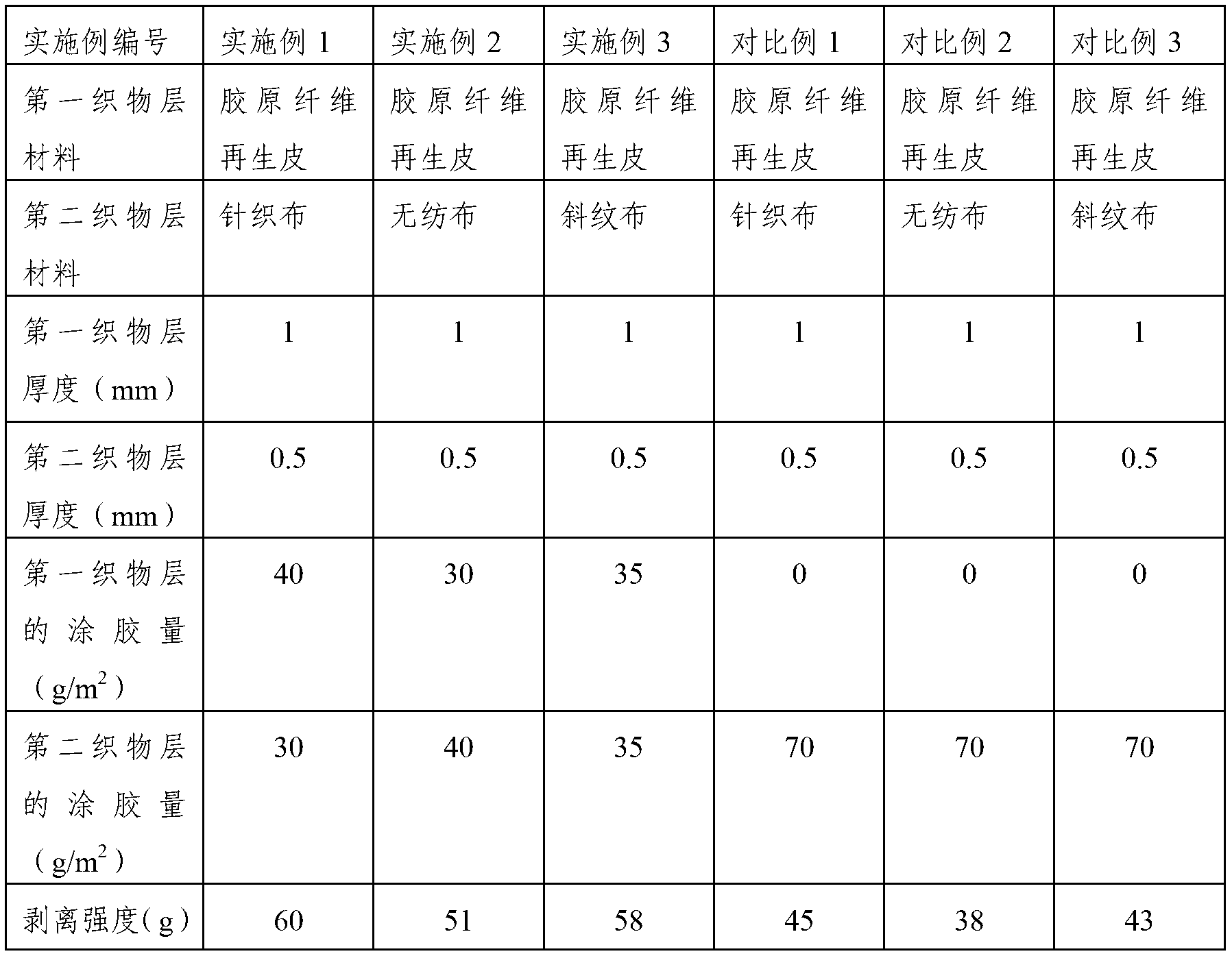Double-side gluing composition process
A compound process and double-sided gluing technology, which is applied to layered products, lamination devices, lamination, etc., can solve problems such as increasing production costs, wasting rubber materials, and affecting product service life, and achieves reduction in production costs, sticking The effect of improving the knot strength and improving the bond strength
- Summary
- Abstract
- Description
- Claims
- Application Information
AI Technical Summary
Problems solved by technology
Method used
Image
Examples
Embodiment 1
[0029] The invention relates to a double-sided gluing composite process, which comprises the following steps in sequence:
[0030] (1) Cloth feeding: Collagen fiber regenerated leather and knitted fabric are drawn from the cloth feeding roller by the tension of the program-controlled cloth removing roller respectively;
[0031] (2) Gluing: Collagen fiber regenerated leather and knitted fabric are glued by passing between the rubberizing roller and the cloth guide roller respectively; by gluing, the first glue is formed on the side of the first fabric layer facing the second fabric layer surface, while forming a second adhesive surface on the side of the second fabric layer facing the first fabric layer. The first fabric layer is collagen fiber regenerated leather, and the second fabric layer is knitted cloth. Here, the rubber material is supplied to the hopper by the rubber compounding system, and then supplied from the hopper to the outer surface of the rubber-coating patter...
Embodiment 2
[0036] The invention relates to a double-sided gluing composite process, which comprises the following steps in sequence:
[0037] (1) Cloth feeding: Collagen fiber regenerated leather and non-woven fabric are drawn from the cloth feeding roller by the tension of the program-controlled cloth removing roller respectively;
[0038] (2) Gluing: Collagen fiber regenerated leather and non-woven fabric are respectively passed between the rubberizing roller and the cloth guide roller for gluing; by gluing, the first fabric layer is formed on the side of the first fabric layer towards the second fabric layer. The glue surface is formed at the same time on the side of the second fabric layer facing the first fabric layer to form a second glue surface. The first fabric layer is collagen fiber regenerated leather, and the second fabric layer is non-woven fabric. Here, the rubber material is supplied to the hopper by the rubber compounding system, and then supplied from the hopper to the...
Embodiment 3
[0043] The invention relates to a double-sided gluing composite process, which comprises the following steps in sequence:
[0044] (1) Cloth feeding: Collagen fiber regenerated leather and twill cloth are drawn from the cloth feeding roller by the tension pull of the program-controlled cloth removing roller respectively;
[0045] (2) Gluing: The collagen fiber regenerated leather and the twill cloth are glued by passing between the rubberizing roller and the cloth guide roller respectively; by gluing, the first rubber surface is formed on the side of the first fabric layer facing the second fabric layer , and at the same time form a second adhesive surface on the side of the second fabric layer facing the first fabric layer. The first fabric layer is collagen fiber regenerated leather, and the second fabric layer is twill cloth. Here, the rubber is supplied into the cylinder of the rubber coating roller by the rubber compounding system, and penetrates from the glue coating ho...
PUM
 Login to View More
Login to View More Abstract
Description
Claims
Application Information
 Login to View More
Login to View More - R&D
- Intellectual Property
- Life Sciences
- Materials
- Tech Scout
- Unparalleled Data Quality
- Higher Quality Content
- 60% Fewer Hallucinations
Browse by: Latest US Patents, China's latest patents, Technical Efficacy Thesaurus, Application Domain, Technology Topic, Popular Technical Reports.
© 2025 PatSnap. All rights reserved.Legal|Privacy policy|Modern Slavery Act Transparency Statement|Sitemap|About US| Contact US: help@patsnap.com

